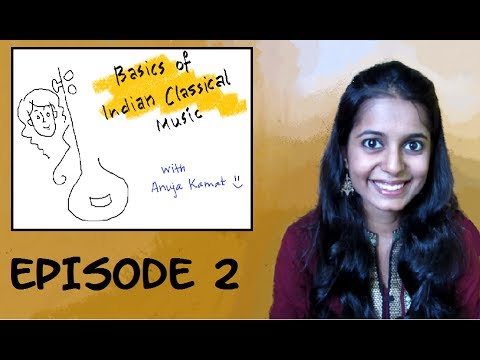What are swaras?
Hindustani classical music has seven basic notes called swaras. These are Shadja, Rishabha, Gandhara, Madhyama, Panchama, Dhaivata and Nishada. We commonly come across them in their shortened forms as Sa, Re, Ga, Ma, Pa, Dha, and Ni. Sa is the root/base note and the reference point based on which an octave is defined. Together, they are known as the sargam.
The Shadja
The Shadja or Sa is the root/base note with respect to which remaining swaras of the raga (tune) are defined. Any raga in Hindustani classical music is a journey of notes that start from this home called Sa. The path that we decide to take for this journey from home is never the same for two different ragas. It is distinct in many ways. A musician performing Indian classical music can improvise in any way, as long as they stick to the predefined pathway of a raga [1].
The Shadja (Sa) or base note is so important to Hindustani classical music that one of the India’s greatest vocalist, Bharat Ratna Pandit Bhimsen Joshi once exclaimed …
“Taal gaya toh baal gaya, lekin sur gaya toh sir gaya”
which translates to “Going off beat is like losing your hair, but going off pitch is like losing your head”.
Why practice swaras?
If you want to learn how to sing better , you should know swaras are the building blocks of vocal training. The following video by Ms. Anuja Kamat [2] explains in depth why practicing swaras to perfection is important if you are training to sing.
Sources referred to in this article [1] - This quora article on svaras is informative. [2] - Anuja Kamat is a popular youtuber who explains concepts of Indian classical music
Other Articles of Interest


I am very interesting to learn
Singing is my life if I will choose any another career then still I will not leave singing.
Hi Sneha Raj….it is very exciting to read about Ur beiliefs n feelings related to Ur passion…the reason to msg u is my feelings are totally same but slightly differently…I’m a guitar player and a mixing engineer….
I really like to jam with you….if u r interested kindly reply….
Really
I like dis class. Very useful.. Bcoz i have lot of prblm.. I tried. But nt yet solved.. So pls advice or give me any lesson for practice.. Pls
Am vry happy to join ths app my childhood hobby I want learn music&singing now I got chance miracle happened I think I nvr think am learning thank u.am trying to understand what all.🙏
This is awesome, and easy way of learning. I have had a passion of music since my childhood, unfortunately, learnt a basic, a while ago, and didn’t get a proper guru,for music. I’ve always wanted to become a singer, back Those days there was no technology. I believe anyone who is serious abt any career can achieve.
regina9477@gmail.com
Serious about learning music. Thanks appreciate your help. Reg
It is beautiful.
I love listening to classical music.
But I know not singing.
I am 55.
I am working.
I think I may know music , if not singing from this app.
I feel obliged.
i like it your copmpliment for music .becoz music is my life i cant also lieve without to music . and i like to classical musics . music is tooo fully in to my blood . and i have to feel the music
Lot of topics raad by undersigned but no one has given the example of bollywood song where and how sargam sa re ga ma pa dha ni sa has been used.
suppose in ek din bik jayega maati ke mol , please set the sargam and explain how it has been used.